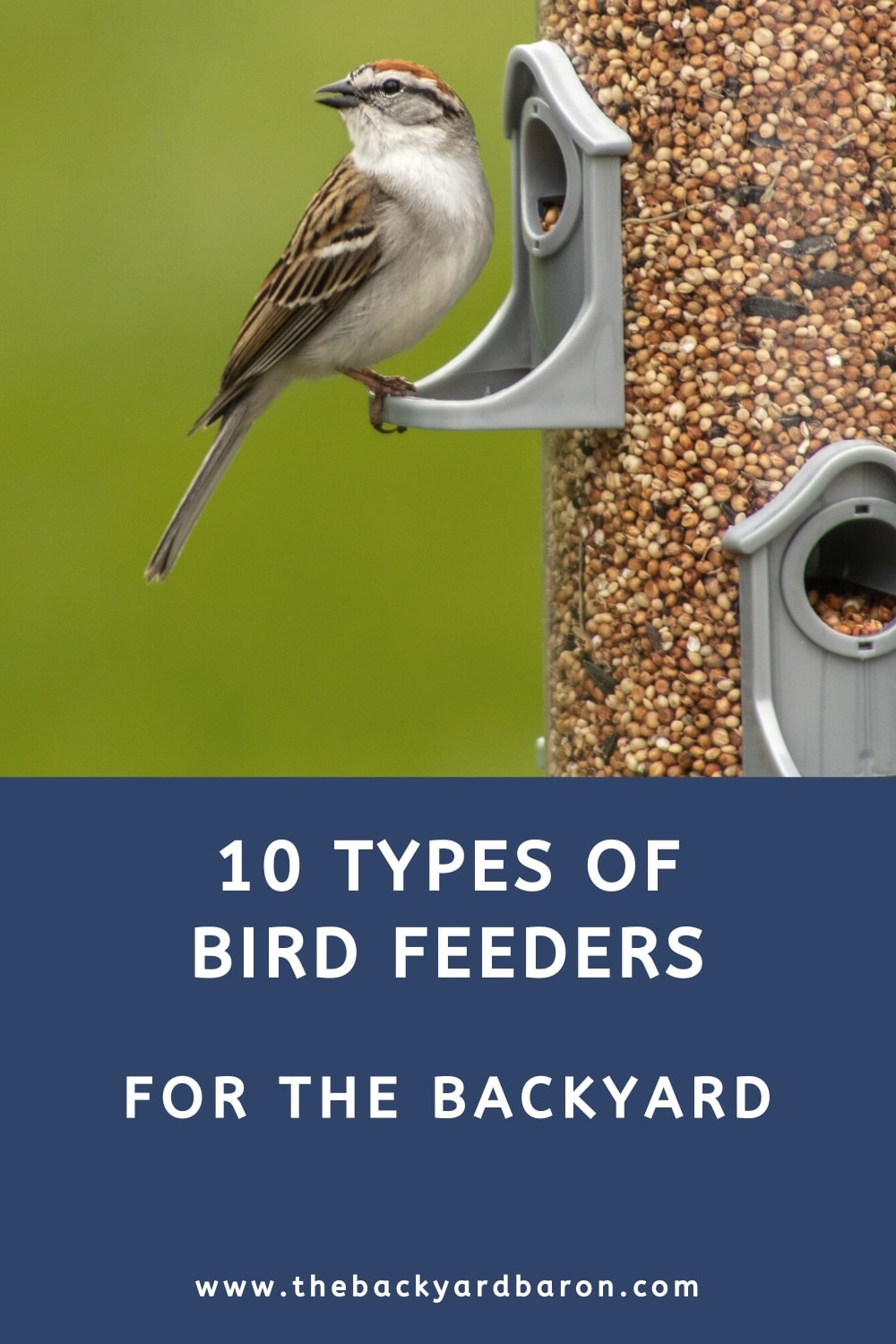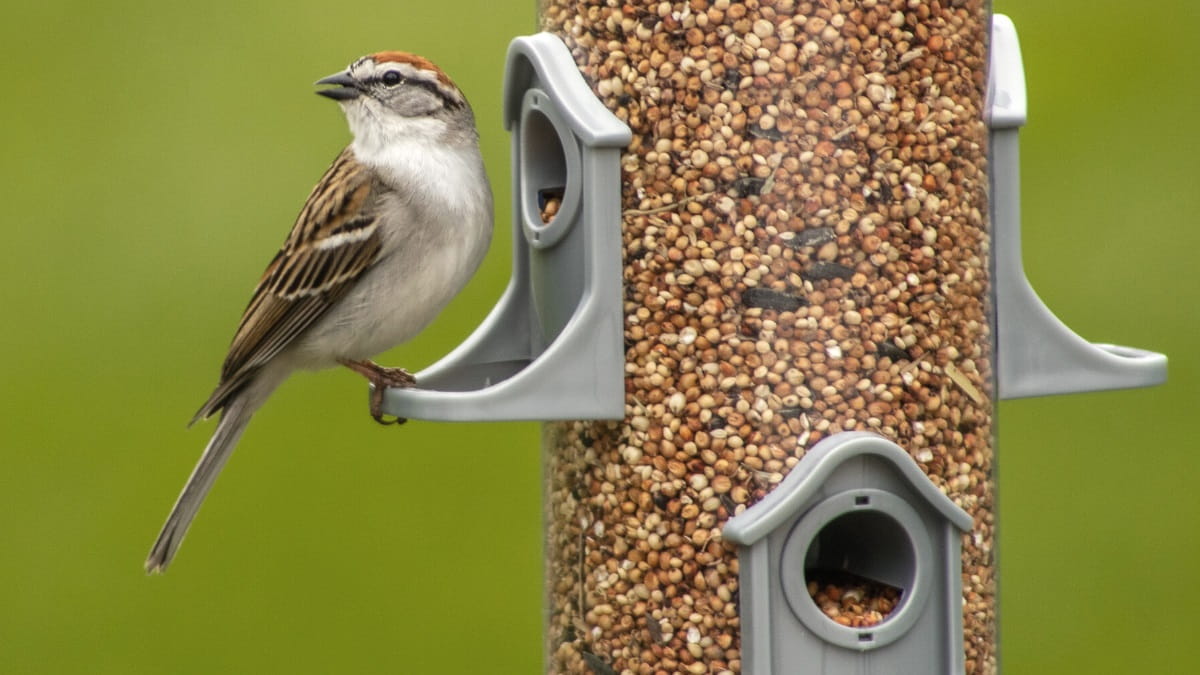I may earn a small commission from purchases made through product links on this website at no extra cost to you. As an Amazon Associate I earn from qualifying purchases.
Last updated: April 19, 2024
This guide shares the ten most common bird feeder types, catering to various bird species and suitable for offering different kinds of food.
A bird feeder not only helps birds satisfy their nutrition needs, but it can also serve as a great decoration item in your backyard.
There are many different types of feeders, all with their own benefits and downsides, and knowing the basics behind each feeder will help you to make an informed decision for your backyard.
In this article, I am going to walk you through the most common types of bird feeders, their pros and cons, what kind of food they offer, and what birds they are best suited for.
Do you also have a birdhouse? Read my guide about ways to attract birds to a birdhouse, with bird feeders as a food source being one of them.
1. Platform Bird Feeder
Platform feeders, otherwise referred to as tray feeders, are a common type of feeder, and they come in a variety of shapes and sizes.
As the name suggests, a platform feeder is simply a flat surface (typically made of wood) that can be hung on a tree or mounted on top of a pole.
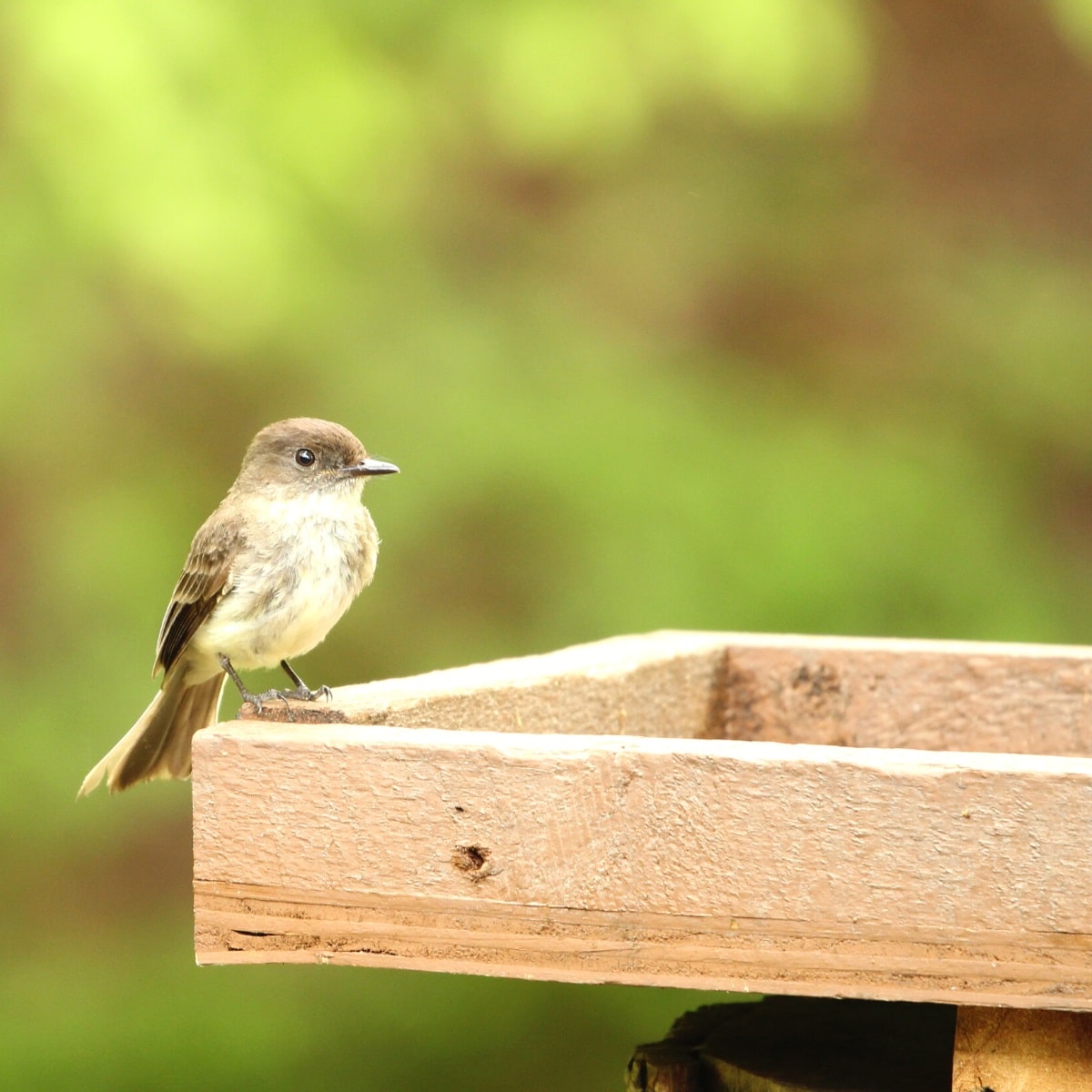
Because they are open and often quite large, they can attract birds of different sizes, such as cardinals, bluejays, pigeons, sparrows, and grosbeaks.
Do note, though, that tray feeders will also attract squirrels and chipmunks because they can be easily accessed, so it’s best to keep an eye on that.
Read my guide explaining what to feed squirrels in the backyard for more tips and advice on feeding squirrels responsibly.
2. Tube Bird Feeder
Tube bird feeders are indeed shaped like a tube and are often made of clear plastic or even glass. Birds can eat through small feeding ports that often come with perches for smaller birds to sit on.
Because seeds are stored in a tube, they can be kept clean and dry for longer periods. However, it’s always wise to clean and refill a feeder frequently to avoid contamination with mold and bacteria.
- 🌱 【ClASSIC METAL & CONSIDERATE DESIGN】 Witacles bird feeder is easy to...
- 🌱 【17 INCH TALL, LARGER CAPACITY】 Witacles bird feeder'sheight is up to...
- 🌱 【4 QUALITY METAL FEEDING PERCHES】 All Metal top, base, feeding ports,...
Tube bird feeders are most suitable for smaller birds, such as sparrows, chickadees, titmice, and finches, and are best filled with sunflower, safflower, or mixed seeds.
While tube feeders certainly aren’t entirely squirrel resistant, they are a bit more challenging to access, especially when the ports are made of metal.
3. Hopper Bird Feeder
Hopper feeders work with a dispenser system where birds can eat seeds from a chamber as they are being dispensed from the bottom.
They are often designed as a house to make them look more appealing as a backyard decoration item, but also to protect the seed chamber from the elements and to offer birds a perching area.

Depending on the size, hopper bird feeders can attract birds of all sizes. Sadly, they typically don’t keep squirrels away, so a squirrel baffle might be necessary.
Also note that while hopper feeders have large chambers allowing for many days of food supply, they do need to be cleaned regularly.
4. Window Bird Feeder
A window feeder is a type of bird feeder that needs to be attached to a window with suction cups or otherwise attached to window frames.
As you can imagine, window bird feeders are great fun as it offers interesting views of birds when they are feeding.
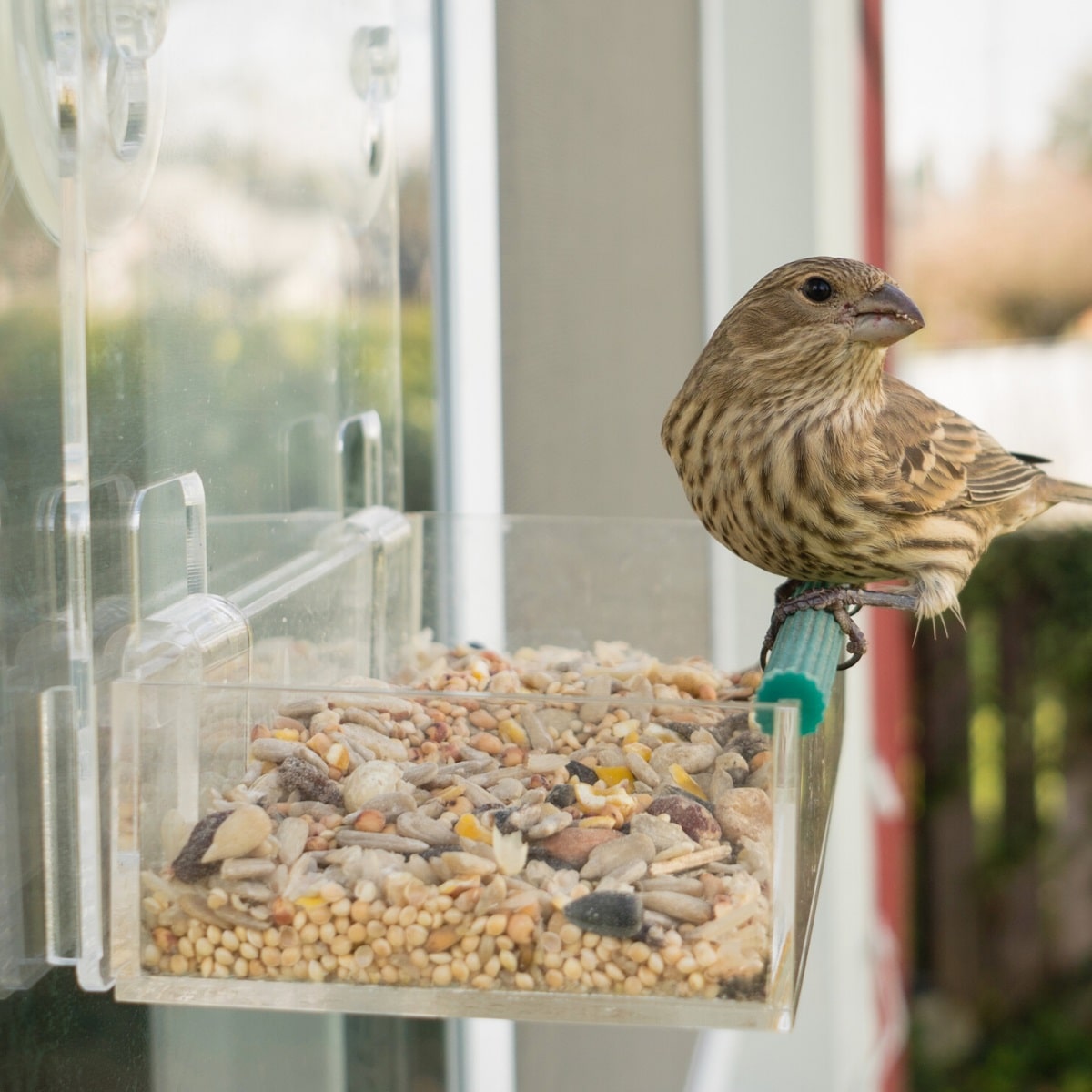
What’s great is that window bird feeders come in various shapes and sizes, so they can make a great decoration item, especially if you don’t have a yard.
The average window feeder is also very easy to clean and refill due to its simplistic design and plastic materials.
5. Cage Bird Feeder
A cage bird feeder is a feeder that is enclosed in a steel or heavy plastic cylindrical cage.
The biggest benefit of cage feeders is that smaller birds can enter this cage and reach the food, whereas larger birds and squirrels can’t.
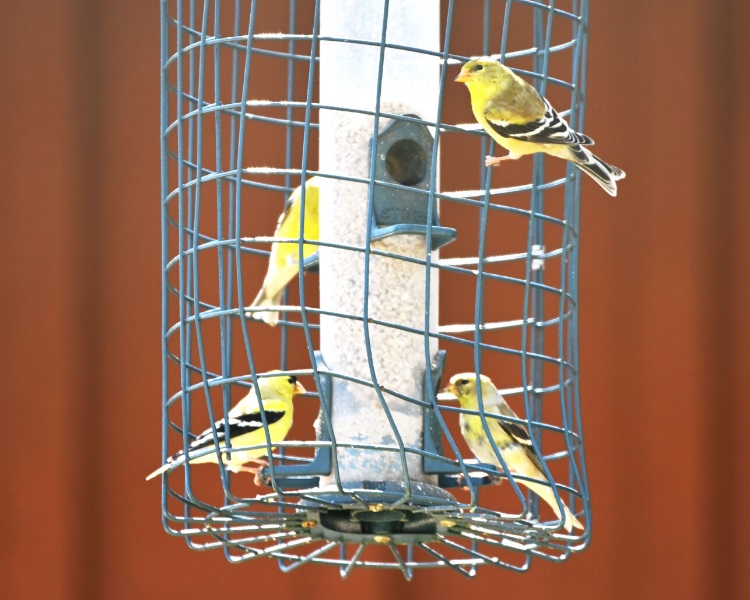
Not only will this keep the food reserved for smaller birds, but it will also protect smaller birds against predatory birds or other animals.
You will often see tube feeders with a cage around them to offer that much-needed protection.
6. Ground Bird Feeder
Ground feeders are usually flat (like a platform feeder) and are located on the ground or otherwise just above the ground.
The purpose of a ground feeder is to offer seeds to ground-feeding birds on a tray rather than literally on the ground, so it adds some protection and creates a more centralized feeding location.
- Reliable Quality:This platform ground bird feeder tray is made of metal mesh and...
- Minimalist Design:The practical and minimalist design provides the maximum using...
- Easy to Use and Clean: You just need to rinse it with clean water or wipe it...
If you have ground-feeding birds in your area, such as doves, native sparrows, towhees, and juncos, a ground feeder may be worth looking into.
Some ground feeders even come with a roof for extra protection, and some feeders have screens or perforated bottoms to allow water to escape and trigger some ventilation.
7. Nectar Bird Feeder
A nectar bird feeder is designed to hold a mixture of table sugar and water and is suitable for nectar-loving birds.
This is why they’re often referred to as hummingbird feeders because hummingbirds feed on nectar.

As you can imagine, nectar bird feeders do need to be cleaned regularly to ensure the food content doesn’t get contaminated.
Nectar bird feeders are great to have in the backyard because watching hummingbirds feed is such a fascinating sight.
Read my guide to hummingbirds and nesting for practical tips on how to attract hummingbirds to the yard.
8. Peanut Bird Feeder
As the name suggests, the purpose of a peanut bird feeder is to hold peanuts for those birds that love feeding on this type of food.
They can come in various shapes and sizes and can also easily be created as a DIY project.

Many birds will appreciate peanuts, but bluebirds, nuthatches, and woodpeckers, in particular, might frequent your backyard a bit more often should you install a peanut feeder.
A typical peanut feeder is shaped like a tube with mesh around the food, allowing birds to reach the peanuts.
9. Suet Bird Feeder
Suet feeders are a type of bird feeder designed to hold suet cakes, a protein-rich food that birds absolutely love.
A suet cake typically is a mix of seeds and suet or pork fat, and can also be produced in the shape of a ball. You can also make fat balls yourself and add some oatmeal for extra nutrition.
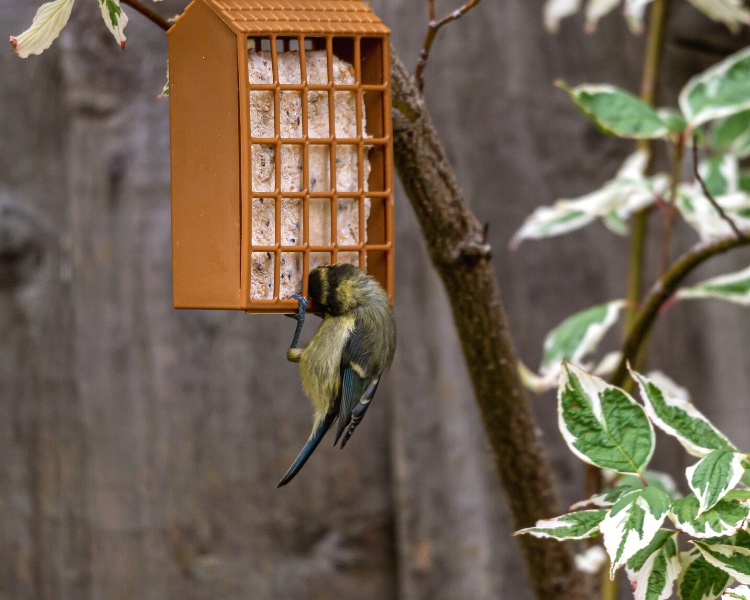
A traditional suet bird feeder is a wired cage with a suet cake in it and is great for the colder winter months when birds need nutrient-rich foods.
Many birds love suet, but you will often find bluebirds, woodpeckers, chickadees, wrens, warblers, starlings, and cardinals happily using suet feeders.
10. Thistle Bird Feeder
A thistle bird feeder is also often referred to as a nyjer/niger bird feeder or a finch bird feeder.
The thistle seed is a thin black seed that has evolved into a popular bird food, with many backyard bird species eating them.
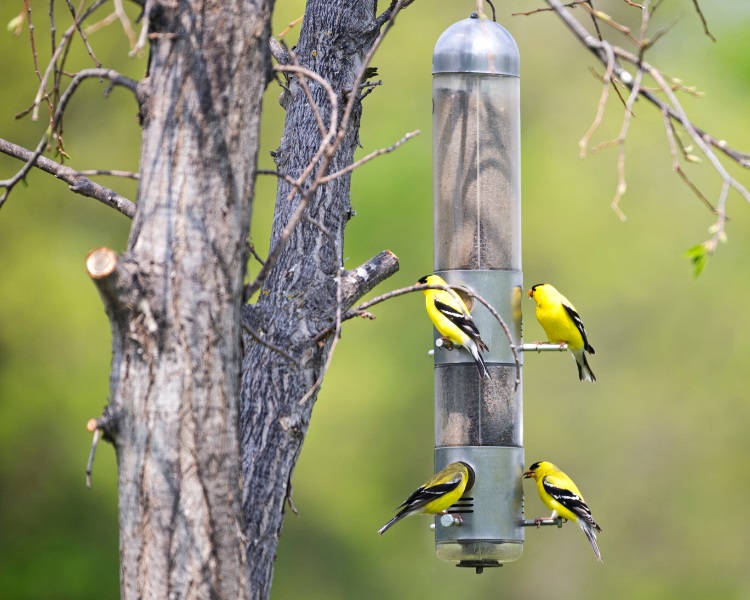
Many seed-eating birds will happily visit your backyard to eat thistles, such as finches, doves, song sparrows, and buntings.
Thistle bird feeders typically come in either a tube shape with metal mesh or otherwise as a small bag with soft mesh that allows birds to pull the seeds out.
Hopefully this list has helped you find the perfect bird feeder for your needs and backyard space.
The feeder type you choose depends on the kind of birds you want around your home and what kinds of food they prefer. Whether it’s an old-fashioned tube feeder or something more contemporary like a hanging netting system with platforms, make sure the design is a good fit for your backyard and practical enough for birds to use.
It’s also essential to make a habit of regularly cleaning bird feeders and also regularly replacing the seeds with a fresh load.
If you don’t already have a bird house installed in your backyard, read my guide about the benefits of bird houses, which you may find interesting.
